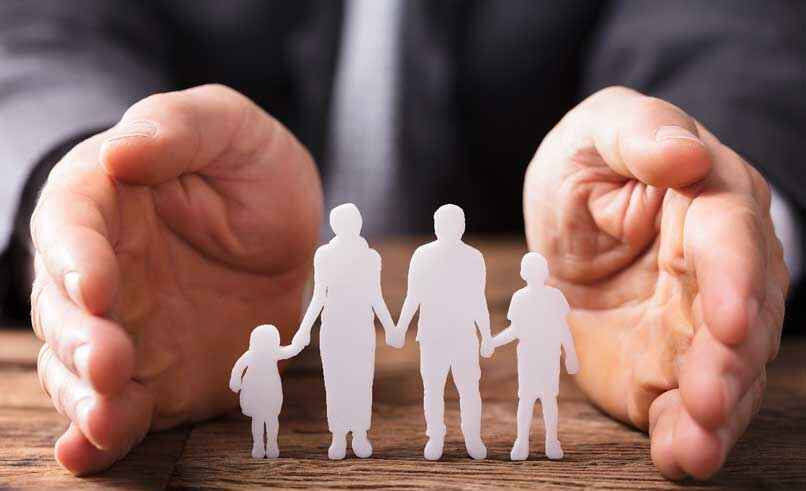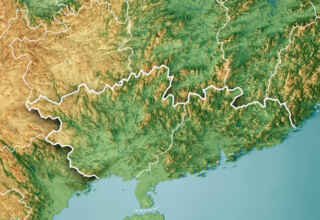
The devastation and loss caused by environmental disasters caused by climate change affect multiple aspects of the lives of those affected, both physically and socially. When such events occur, timely relief efforts to mitigate the effects of natural or man-made disasters are fundamental. In addition to this, observing the effects of disasters on affected communities is crucial to understanding the vulnerabilities of people affected by disasters such as children, women, older people and those with existing disabilities or chronic health conditions. In some contexts, this may also include ethnic or religious minorities, who face disproportionate risk during disasters and conflicts (1), but also to understand the resilience capacities these people have. This allows for action to be taken to improve the protection of the most vulnerable groups in contexts where environmental disasters have occurred.
While some contributing factors to this vulnerability may be intrinsic, most commonly they are due to environmental or societal factors that pre-date the disaster and conflict (1). In fact, existing socioeconomic and gender-based inequalities, discriminatory gendered norms, power abuse and the resulting pervasive violence against vulnerable groups, however, are also able to occupy this space, therefore increasing the potential for worsening conditions in the aftermath of disasters and leaving those traditionally marginalized even more vulnerable to subsequent risks (2).
The deaths caused by disasters, as well as the increase in inequalities and the spread of poverty and disease contribute to the exacerbation of the current crisis. As the difficulties of survival increase (e.g. collapsing health systems, food and livelihood insecurities can also increase social tensions), the situation may become even more severe as acts of violence (especially gender-based) or looting may occur in the face of weak surveillance structures; as a matter of facts, State or community services may be interrupted or unavailable, have scarce resources, or fail to prioritize the protection of vulnerable groups in the face of a disaster situation.
Following a disaster, people who lose everything in their possession may be forced to migrate, which may take them abroad as well as to a different part of their country. In the latter case, we speak of Internally Displaced People (IDPs). According to the International Federation of the Red Cross (IFRC), the harmful combination of increased gender-based violence and inadequate means of protection place IDPs under great pressure, due to often witnessing a disaster, surviving violence, and experiencing the trauma of displacement itself. In refugee and displacement camps (which are usually created in the wake of disasters), cramped living circumstances, lack of security at water, sanitation facilities and the dearth of channels in which to report violence may leave women and girls at higher risk of sexual abuse (3). Such levels of violence have to do precisely with the lack of protection of vulnerable groups, both by the government of the country that has suffered the environmental disaster, for the reasons discussed above, and a poor humanitarian response by international governmental or non-governmental organizations.
Whilst emergency responses that focus on protection can support those most at-risk of violence, a resilience perspective provides a more intricate, multilevel, and multifaceted approach that has the potential to tackle vulnerability to disaster risks (2). Indeed, it would be advisable for countries most prone to natural disasters to have sound disaster mitigation plans in place that are able to go into action the moment the disaster occurs. Such a plan must be drawn up and, subsequently, implemented, in conjunction between the governments of vulnerable countries and the international organizations responsible for mitigating this type of event. By this is meant a Disaster Risk Reduction (DDR) strategy that considers the adequate protection of the most vulnerable groups by establishing an intervention strategy when, following a disaster, episodes of violence occur and target the categories of people who fall under the label of “vulnerable”.
It is desirable to implement such a strategy to act at 360°; by this is meant, clearly, not only to intervene when the disaster has already occurred, but through prevention, and preparation policies, which are interconnected with response and rehabilitation/reconstruction within the crisis management cycle (4). With reference to the first two, these are primarily concerned with restoring the living conditions of the affected communities. They aim at overcoming the effects of disasters and conflict by responding to the needs of the afflicted communities, and offering them long-term improved shelter, infrastructures, income generating and skill building opportunities, and educational facilities. Regarding the phases to be implemented post-disaster, reconstruction process comprises aspects of physical restoration as well as elements of socio-economic rehabilitation, for instance, repair and provision of shelters, and restoration of public facilities including schools, hospitals, electricity and water supply, and rebuilding/repairing roads and bridges and other infrastructures. The response, recovery and rehabilitation projects are thus meant to enable these communities to rebuild their lives in a holistic and integrated manner (4).
To mitigate disasters by adequately protecting the most vulnerable groups, safety and security measures must be implemented. People affected by disasters are protected when people can safely and effectively evacuate to safer places, using disaster management knowledge and good judgment. Communities can take actions for improving safety and enhancing resilience by producing hazard maps, checking regular evacuation routes, reassessing the safety of evacuation centers, and preparing responsive evacuation procedures that are tailored to their local environment (4). Furthermore, WASH (Water, Sanitation and Hygiene) services must also be ensured during the occurrence of disasters as, otherwise, their scarcity or lack would contribute to exacerbating the crisis: disease and death would spread. When, in order to survive, people are forced to abandon their homes and possessions, they must be provided with shelter as well as temporary means of subsistence aimed at meeting basic needs; this includes food, water, first aid and non-food items (NFIs) such as blankets, shoes, clothes, etc.
Governments in the most vulnerable countries must therefore prepare themselves to be able to guarantee minimum survival standards for people affected by environmental disasters, in particular to protect the most vulnerable. Institutions must therefore establish action plans through policies and actions to be implemented immediately after the disaster occurs. Furthermore, they must in no way hinder the humanitarian response from international governmental or non-governmental organizations whose aim is to help mitigate the situation by providing the basic necessities mentioned above and whose assistance must be provided in accordance with the principles of humanity, neutrality and impartiality established by UNGA Resolution 46/182 of 1991 (5).
References:
- https://www.physio-pedia.com/Protecting_the_Vulnerable_in_Disasters_and_Conflicts
- https://www.refworld.org/pdfid/583c0c744.pdf
- https://reliefweb.int/report/world/predictable-preventable-best-practices-addressing-interpersonal-and-self-directed
- https://faolex.fao.org/docs/pdf/pak173386.pdf
- https://documents-dds-ny.un.org/doc/RESOLUTION/GEN/NR0/582/70/IMG/NR058270.pdf?OpenElement
By The European Institute for International Law and International Relations.












